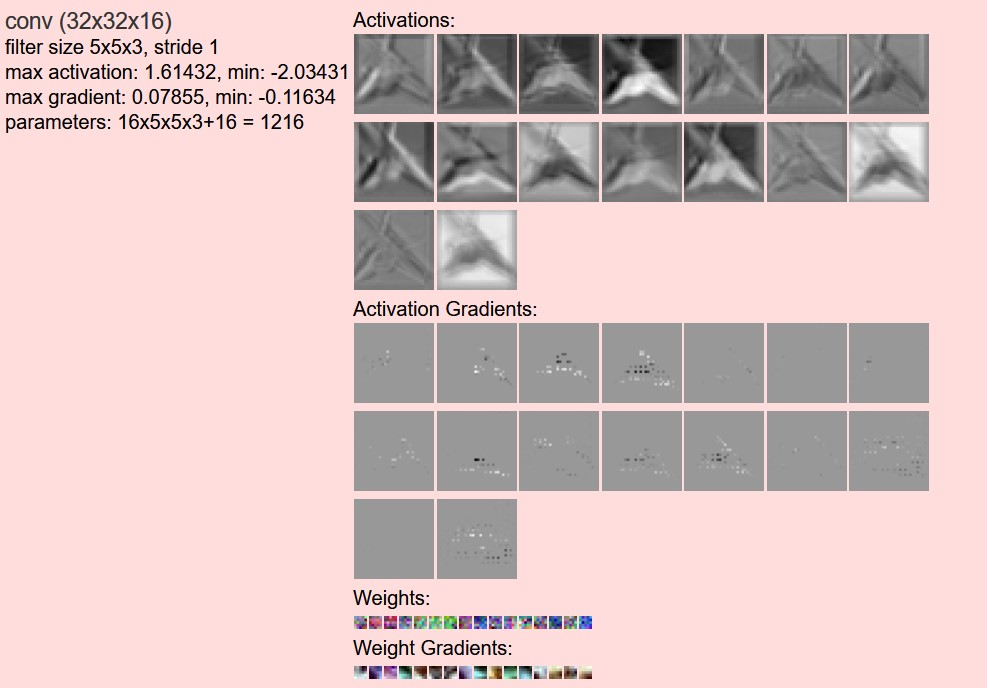Stanford CS231n实践笔记(课时14卷积神经网络详解 上)
本课我们主要来研究一个“浏览器中的卷积神经网络”










这只是一个展示项目,但是能够帮助直观地看到一些东西
地址:https://cs.stanford.edu/people/karpathy/convnetjs/demo/cifar10.html
layer_defs
= [];
layer_defs.push({
type
:
'input', out_sx
:
32, out_sy
:
32, out_depth
:
3});
layer_defs.push({
type
:
'conv', sx
:
5, filters
:
16, stride
:
1, pad
:
2, activation
:
'relu'});
layer_defs.push({
type
:
'pool', sx
:
2, stride
:
2});
layer_defs.push({
type
:
'conv', sx
:
5, filters
:
20, stride
:
1, pad
:
2, activation
:
'relu'});
layer_defs.push({
type
:
'pool', sx
:
2, stride
:
2});
layer_defs.push({
type
:
'conv', sx
:
5, filters
:
20, stride
:
1, pad
:
2, activation
:
'relu'});
layer_defs.push({
type
:
'pool', sx
:
2, stride
:
2});
layer_defs.push({
type
:
'softmax', num_classes
:
10});
net
= new convnetjs.Net();
net.makeLayers(layer_defs);
网络的构造就是conv-pool-conv-pool这样的过程。
原始图片输入
第一层卷积
和relu
第一层pool
可以返现,图片的大小降低明显
第二次
第三次
最后,全连接并softmax
结束了。基本能够理解。
可以预见的一点是,在这样一个发展迅速的时代,拥有数据分析背景、能力,特别是深度学习技术,将使工程师具备价值。要想办法克服显示的瓶颈,成为这样的人。毕竟,真正的牛人是创造规则的。




 浙公网安备 33010602011771号
浙公网安备 33010602011771号